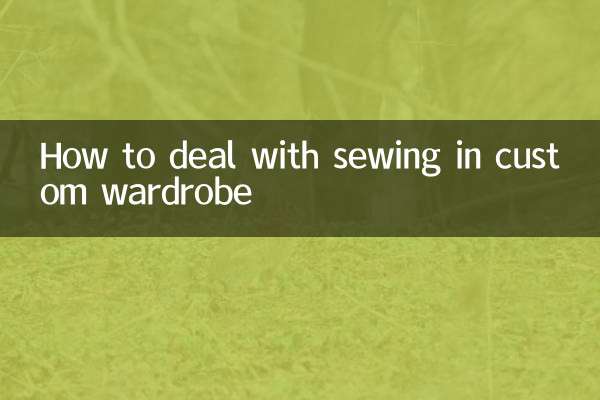How to do your own wardrobe: Popular DIY guides and practical data on the entire network
In the past 10 days, discussions about "homemade wardrobe" on social media and home forums have soared. Whether it is to save budget, personalized design, or environmental protection needs, DIY wardrobes have become the first choice for many people. This article will combine popular topics across the Internet to provide you with structured data and practical steps to help you easily create an exclusive wardrobe.
According to recent search data, the following three wardrobe types are the most popular:

| type | Material | advantage | shortcoming |
|---|---|---|---|
| Panel wardrobe | Density plate, particle plate | Low cost and easy to process | Weak load bearing |
| Solid wood wardrobe | Pine, oak | Durable and environmentally friendly | Higher price |
| Metal frame wardrobe | Steel pipe + grid/fabric | Flexible and lightweight | Poor aesthetics |
The tools and accessories that DIY enthusiasts have recently discussed are as follows:
| Tools/Accessories | use | Popularity index |
|---|---|---|
| Electric screwdriver | Quickly install the board | ★★★★★ |
| 3D design software (such as SketchUp) | Plan ahead of schedule | ★★★★☆ |
| Adjustable laminate holder | Flexible separation of space | ★★★★★ |
Step 1: Measurement and Design
Determine the size of the wardrobe according to the room size, and it is recommended to reserve 5cm ventilation gap. Popular designs include: top-top, L-shaped corner, and embedded.
Step 2: Purchase materials
Refer to the table above to select the main material, and you also need to prepare: hardware hinges (recommended brand "Heidi"), guide rails (silent model), and environmentally friendly paint.
Step 3: Cutting and Assembly
Use a jigsaw to cut the board and wear goggles. Assemble the frame first, then install the laminate and drawers.
Step 4: Surface treatment
Recent popular treatment methods: water-based wood paint (environmentally friendly), PVC film (moisture-proof), and old-fashioned technology (retro style).
Step 5: Functional upgrade
Accessories such as LED induction lights (the sales volume of the entire network increased by 120% per month), rotating mirrors, smart dehumidification boxes, etc. can be installed.
1.Inadequate thickness of the board: The load-bearing layer plate is recommended to be ≥18mm and the side plate is ≥15mm.
2.Ventilation design leak: The back plate needs to be drilled or 2cm away from the wall to prevent moisture and mildew.
3.Hardware is cheap: Inferior hinges can easily cause the door panel to sag (complaint rate accounts for 35%).
Through the above structured data and steps analysis, even novices can complete the wardrobe production efficiently. Remember to share your work on social platforms, tags#DIY Wardrobe ChallengeThe number of readings has exceeded 8 million recently!

check the details

check the details